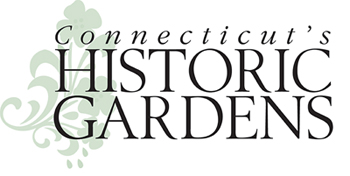Early September is the last of the transition periods in the garden. Summer is still in full display. The phlox are in outrageous bloom, the long trumpets of the Plantagenet hosta still perfume the garden, the summer annuals – cosmos and dwarf zinnias, pot marigolds and petunias have caught their breath and recommenced blooming as if they know that the chilly nights of October are not far away.

Nonetheless the signs of impending autumn are there. I deadhead the phlox on an almost daily basis to keep them in bloom. They would like to set seed and take a well-deserved rest. The hostas leaves are tattered and browned. Autumn ageratum (Eupatorium coelestinum) is just beginning to show a haze of purple. The perennial chrysanthemums (or Dendranthema as we are now to call them) are covered with shiny tight flower buds. And at the edge of each garden path, covered by the burgeoning annuals, is the fresh foliage of the grape hyacinths (Muscari) which will not bloom until next spring.
Update on Peculiar Pollinator Behavior.
As we near the end of this hot summer, pollinators are still quite busy. In an earlier blog I wrote about a curious habit of bumblebees and other pollinators that I had observed on the long trumpet flowers of the Plantagenet hostas (Hosta plantaginea).
 Rather than entering the flower trumpet to seek nectar the bees would climb down the outside of the trumpet until they came to its narrowest part and there they would sit looking for all the world like bare back riders. This year I found the reason for their behavior in Bill Johnson’s “Tongue Twisters” article in the July/August issue of Horticulture magazine. The insects are unable to reach the nectar by entering the flower directly so they position themselves on the outside of the blossom and slice through it to reach the nectar inside. Clever critters!
Rather than entering the flower trumpet to seek nectar the bees would climb down the outside of the trumpet until they came to its narrowest part and there they would sit looking for all the world like bare back riders. This year I found the reason for their behavior in Bill Johnson’s “Tongue Twisters” article in the July/August issue of Horticulture magazine. The insects are unable to reach the nectar by entering the flower directly so they position themselves on the outside of the blossom and slice through it to reach the nectar inside. Clever critters!
Wild Flowers by Woods and Field
 I usually walk to the Webb Deane Stevens museum garden through a small woods and return on a path along the community gardens. Only a few plants flower in the shade of the woods, more blossom just at the entrance. In late July Fringed loosestrife (Lysimachia ciliata) is in full bloom.
I usually walk to the Webb Deane Stevens museum garden through a small woods and return on a path along the community gardens. Only a few plants flower in the shade of the woods, more blossom just at the entrance. In late July Fringed loosestrife (Lysimachia ciliata) is in full bloom.

Around the same time, the brambleberries are ready for eating – a bit sour but still pleasant.

Deeper in the woods are elderberries (Sambucus). They bloomed early in the summer and by August are in fruit although it has not yet taken on a purple color.

A single blossom glows a pristine white on a native hydrangea shrub (Hydrangea arborescens) that grows beside the path midway into the woods.
There is also an unexpected colony of jewelweed (Impatiens capensis) in the woods. This colony grows just beyond the canopy line of a large maple so it gets a bit of sun and in a slight depression in the ground level so it gets a bit of the extra moisture it requires. That is the only place in the woods where jewelweed appears. And since it blooms only sparsely I ponder nature’s ways in placing it there!
Unlike the woodland path, the sunny path home by the community garden is edged by many wildflowers. One particularly interesting one, that I had not seen before, is the dogbane (Apocynum cannabinum).
 Initially I thought it was a Milkweed (an understandable confusion since milkweeds are in the Dogbane family – Apocynaceae). I had to consult an expert to identify this plant with its curious little flowers and long skinny beans. Dogbane is native to most of the continental United States and can be an aggressive spreader in a garden setting. It is a poisonous plant and certainly not to be ingested, but it is a great plant for pollinators including many butterflies and moths, wasps and beetles as well as bees. Dogbane even has a beetle named for it – the Dogbane Beetle (Chrysochus auratus)! And like milkweeds, dogbane has stems containing stringy fibers and seed pods filled with fluff. Birds take advantage of these fibers and fluff for nest-building.
Initially I thought it was a Milkweed (an understandable confusion since milkweeds are in the Dogbane family – Apocynaceae). I had to consult an expert to identify this plant with its curious little flowers and long skinny beans. Dogbane is native to most of the continental United States and can be an aggressive spreader in a garden setting. It is a poisonous plant and certainly not to be ingested, but it is a great plant for pollinators including many butterflies and moths, wasps and beetles as well as bees. Dogbane even has a beetle named for it – the Dogbane Beetle (Chrysochus auratus)! And like milkweeds, dogbane has stems containing stringy fibers and seed pods filled with fluff. Birds take advantage of these fibers and fluff for nest-building.
Dogbane is a plant well worth admiring on the walk home from the garden.
